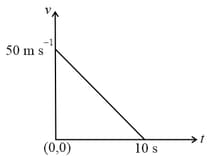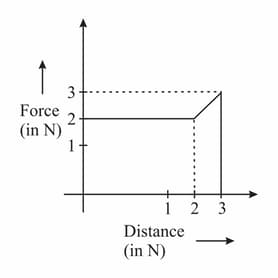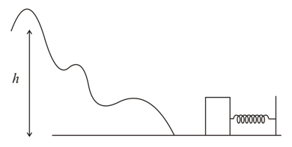EASY
Earn 100
An electron of mass kg moves with a speed of m/s. It acquires a K.E. of
(a)562.50 eV
(b)1125 eV
(c)1250 eV
(d)281.25 eV
50% studentsanswered this correctly
Important Questions on Work, Energy and Power
MEDIUM
EASY

EASY
EASY
EASY
MEDIUM
(A)
(B)
(C)
(D)
HARD

EASY
EASY
EASY
MEDIUM
MEDIUM
MEDIUM
MEDIUM
HARD
A small block starts slipping down from a point on an inclined plane , which is making an angle with the horizontal section is smooth and the remaining section is rough with a coefficient of friction . It is found that the block comes to rest as it reaches the bottom (point A) of the inclined plane. If , the coefficient of friction is given by . The value of is .......

MEDIUM
In the diagram below the spring has a force constant of , the block has a mass of , and the height of hill is . Determine the compression of the spring such that the block just reaches to the top of the hill.
(Assume that there are no non-conservative forces involved.)

EASY
EASY
MEDIUM
MEDIUM

